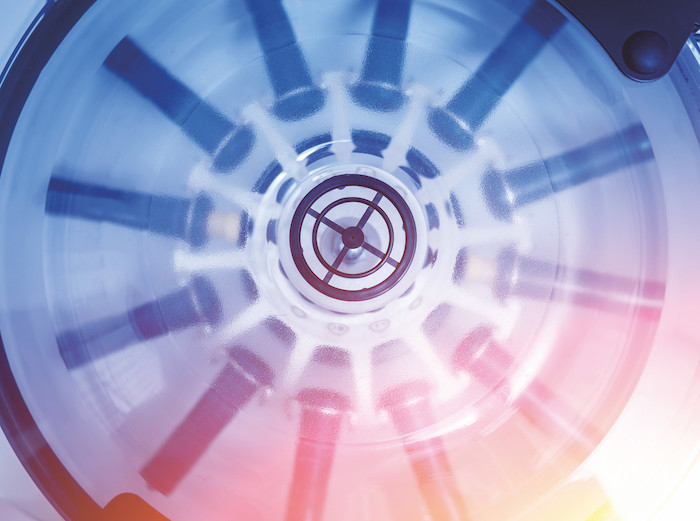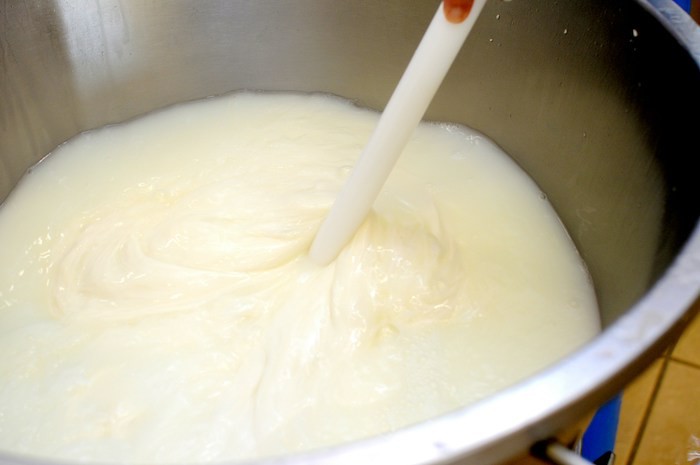
In the first of a new series, Stuart Bale of Crucible – London’s laboratory and creative hub for bartenders –explains the techniques of clarification to make them that bit clearer.
Clarification in cocktails is a very popular method, particularly among bars featured in The World’s 50 Best, where a minimalist aesthetic reigns. These drinks often look simple but are far from it in execution. Clarification not only enhances appearance, it also refines texture and intensifies flavour – contrary to the assumption that clarity means neutrality. One versatile fruit for this process is the banana. So we’re going to look at the pros and cons of three clarification methods using bananas: centrifuge, agar agar and milk washing.
Centrifuge clarification
Using a centrifuge is the fastest and most efficient method – but also the most expensive. The science behind it involves spinning liquids at high speeds to separate components based on density. At Crucible, the centrifuge runs at 5,000rpm (over 80 rotations per second), demanding precise balance between flasks for safety.
For banana juice, start with peeled, slightly under-ripe bananas (of course, you can choose bananas at whichever ripeness you prefer, we just like the slightly under-ripe ones for the light, kind of grassy flavour they have). Blend into a purée and add Pectinex (2g per 1kg of banana flesh), an enzyme that breaks down pectin – a natural stabiliser in fruit. Let the mixture sit for 10 minutes.
Accurately portion the liquid into flasks, ensuring each has nearly identical weight. After spinning for 10 minutes, a solid puck of pulp forms at the bottom, leaving a pale yellow, clear juice on top. Strain this through a superbag and a coffee filter for a clarified juice rich in banana’s green, grassy, sweet and acidic notes. The leftover pulp can be used in banana bread.
Agar agar clarification
Agar agar, a seaweed-derived gelling agent, can produce an even clearer result than centrifuging, though with lower yield and more time. The golden rule here is a 0.2% ratio: use 0.2g of agar for every 100g of liquid.
To maintain freshness, divide the banana purée (optionally loosened with a little water) into one-third and two-thirds portions. Dissolve agar in the smaller portion and heat it to 85–95°C, where the gelling properties are activated. Once dissolved, gradually mix in the remaining two-thirds, ensuring the blend stays above 35°C. After thorough mixing, place the mixture in an ice bath.
As the liquid cools, it becomes slightly gelatinous. Break it into curds with a whisk and strain it through a superbag. The clarified juice will slowly drip out and may take several hours to fully strain. Pass it through a coffee filter for the final polish.
Milk washing

Unlike the other two methods, milk washing is typically used to clarify entire drinks rather than pure juice, creating a milk punch-style cocktail. This process uses acid to curdle milk, separating it into curds and whey. The curds filter the drink, while the whey retains flavour and clarity.
For banana, blend 500g banana flesh with 100g water, then add 30g of a 20% citric acid solution (100g water + 20g citric acid). Separately, heat 200g whole milk to a gentle simmer, stirring to prevent scalding. Remove from heat and mix in the banana-acid blend.
Let the mixture sit for 15 minutes to curdle. Chill, then strain through a superbag. As it drains, the liquid turns from cloudy to clear. Take the initial cloudier liquid and pass it back through the filter once it starts to run clear. This method takes around two hours for a couple of litres.
Applications
Once clarified, banana juice becomes a versatile cocktail ingredient. For sodas, use centrifuged or agar-filtered banana juice in a 3:1 ratio with water for a fresh, flavourful soda. Milk-washed juice may require acidity adjustments. Syrups & Cordials are another application. Mix any of the clarified juices with sugar in 1:1 or 1:2 ratios. Adding malic acid enhances the natural tanginess of green banana flavours, perfect for cordials.
Whether using high-tech centrifuges, agar, or age-old milk washing, each method brings its own benefits and characteristics. The resulting juices and drinks are not only crystal clear but also full of vibrant, complex banana flavours, perfect for elevating your next cocktail menu.
So, what’s best? Centrifuge is by far the most efficient. Agar produces the best liquid in terms of clarity, milk washing yields the most. Clarifying anything can unlock a new layer of possibilities for bartenders at all levels – and all budgets.


